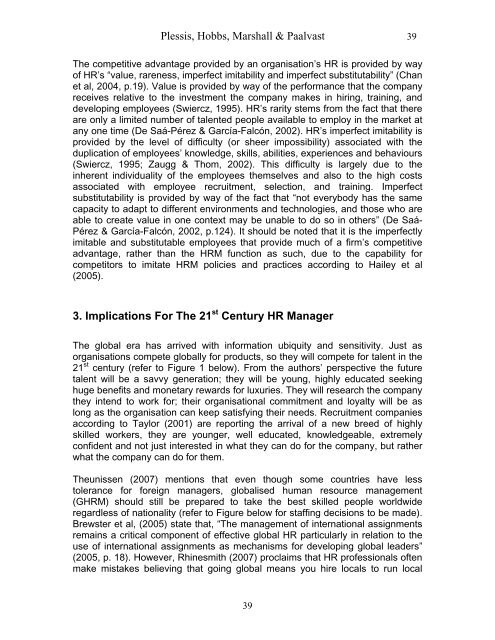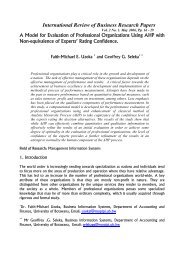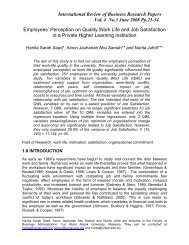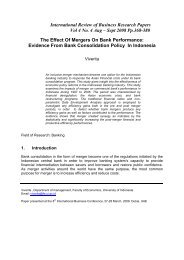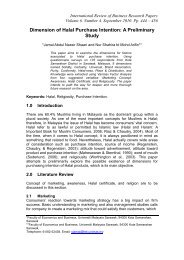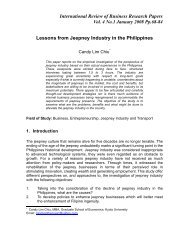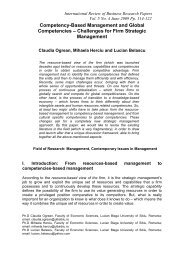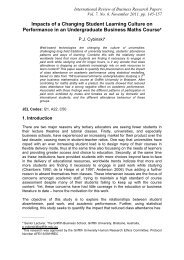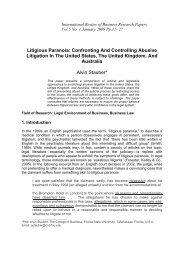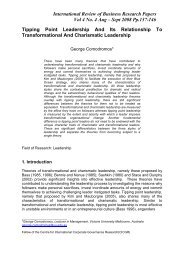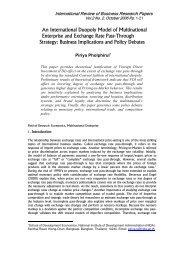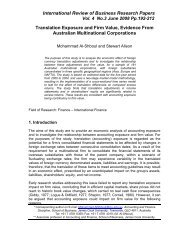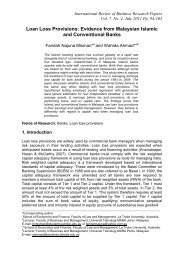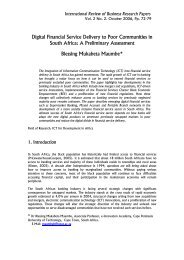Human Resource Functions And Activities In The 21stCentury To ...
Human Resource Functions And Activities In The 21stCentury To ...
Human Resource Functions And Activities In The 21stCentury To ...
You also want an ePaper? Increase the reach of your titles
YUMPU automatically turns print PDFs into web optimized ePapers that Google loves.
Plessis, Hobbs, Marshall & Paalvast 39<strong>The</strong> competitive advantage provided by an organisation’s HR is provided by wayof HR’s “value, rareness, imperfect imitability and imperfect substitutability” (Chanet al, 2004, p.19). Value is provided by way of the performance that the companyreceives relative to the investment the company makes in hiring, training, anddeveloping employees (Swiercz, 1995). HR’s rarity stems from the fact that thereare only a limited number of talented people available to employ in the market atany one time (De Saá-Pérez & García-Falcón, 2002). HR’s imperfect imitability isprovided by the level of difficulty (or sheer impossibility) associated with theduplication of employees’ knowledge, skills, abilities, experiences and behaviours(Swiercz, 1995; Zaugg & Thom, 2002). This difficulty is largely due to theinherent individuality of the employees themselves and also to the high costsassociated with employee recruitment, selection, and training. Imperfectsubstitutability is provided by way of the fact that “not everybody has the samecapacity to adapt to different environments and technologies, and those who areable to create value in one context may be unable to do so in others” (De Saá-Pérez & García-Falcón, 2002, p.124). It should be noted that it is the imperfectlyimitable and substitutable employees that provide much of a firm’s competitiveadvantage, rather than the HRM function as such, due to the capability forcompetitors to imitate HRM policies and practices according to Hailey et al(2005).3. Implications For <strong>The</strong> 21 st Century HR Manager<strong>The</strong> global era has arrived with information ubiquity and sensitivity. Just asorganisations compete globally for products, so they will compete for talent in the21 st century (refer to Figure 1 below). From the authors’ perspective the futuretalent will be a savvy generation; they will be young, highly educated seekinghuge benefits and monetary rewards for luxuries. <strong>The</strong>y will research the companythey intend to work for; their organisational commitment and loyalty will be aslong as the organisation can keep satisfying their needs. Recruitment companiesaccording to Taylor (2001) are reporting the arrival of a new breed of highlyskilled workers, they are younger, well educated, knowledgeable, extremelyconfident and not just interested in what they can do for the company, but ratherwhat the company can do for them.<strong>The</strong>unissen (2007) mentions that even though some countries have lesstolerance for foreign managers, globalised human resource management(GHRM) should still be prepared to take the best skilled people worldwideregardless of nationality (refer to Figure below for staffing decisions to be made).Brewster et al, (2005) state that, “<strong>The</strong> management of international assignmentsremains a critical component of effective global HR particularly in relation to theuse of international assignments as mechanisms for developing global leaders”(2005, p. 18). However, Rhinesmith (2007) proclaims that HR professionals oftenmake mistakes believing that going global means you hire locals to run local39


